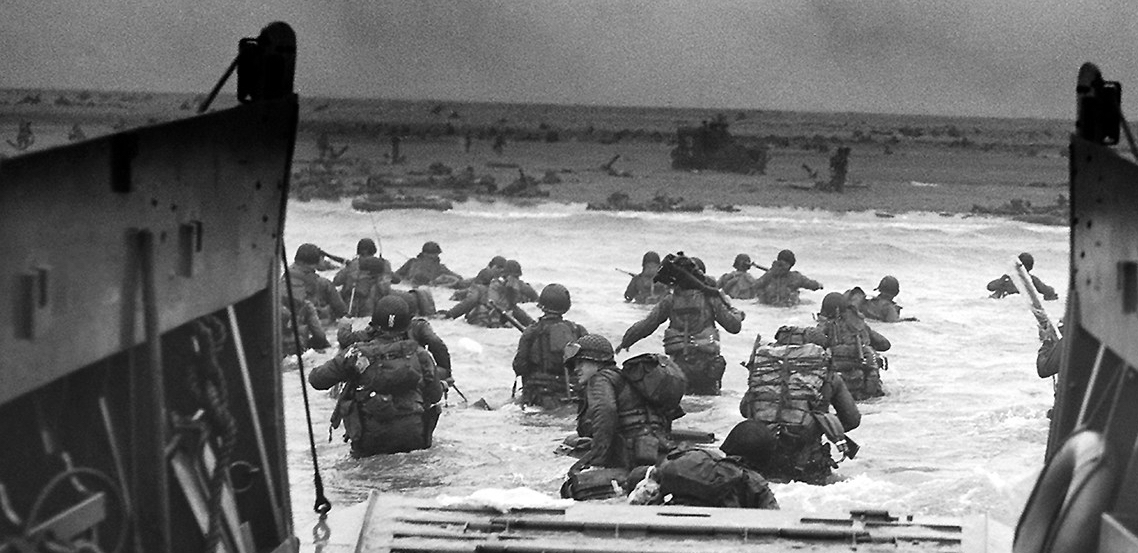

This magnificent photo shows a U.S. Army M113 armored personnel crew of 1st Squadron, 4th Cavalry Regiment operating near Phuoc Vinh, Vietnam, during Operation Toan Thang (Total Victory) I on 12 April 1968. Designed as a post-Tet offensive in the III Corps Tactical Zone, this mission’s goal was to locate and destroy enemy forces on the approaches to Saigon.
Quarterhorse ranks among the senior mounted units in the Army, serving as the reconnaissance element for the fabled Big Red One. During the Vietnam War, the squadron gave commanders a powerful and mobile force. Operating in M113 APCs and M48 Patton tanks, Quarterhorse ranged far and wide through jungles, open country, and rice paddies.
The diagram below shows the positions for a generic Armored Cavalry Assault Vehicle, which was an M113 Armored Personnel Carrier configured for the specific conditions of the Vietnamese battlefields.1 Originally designed as a battlefield taxi for infantrymen, the basic carrier was modified by adding armored shields for the commander and two gunners in the crew compartment. An M79 grenadier was included in the crew, with five Soldiers riding aboard each ACAV.

ACAV crews stowed vast amounts of ordnance aboard their tracks. It wasn’t unusual to carry at least 10,000 rounds of .50 caliber and 7.62mm machine gun ammunition. Also, they stockpiled hundreds of 40mm and hand grenades, M72 Light Aanti-tank Weapons, mines of various types, and all sorts other assorted munitions.
In March 1967, a U.S. Army report described how the M113’s role had changed in Vietnam, being adapted to the specifics of counter-insurgency. American commanders at first felt that armored vehicles would be limited by terrain and weather in-country. But early use of the APC by both .S. and allied forces proved otherwise.2


Quarterhorse and other cavalry units’s flexibility and combat power were devastating to the enemy. With interlocking fields of fire, and dedicated fire support, ACAVs and tanks shot withering quantities of lead and explosives. To cite but one example,Quarterhorse’s Alpha Troop faced the equivalent of a Viet Cong main force regiment on 8 June 1966:3
The Viet Cong were deployed along a five-kilometer stretch of [Highway 13] in positions extending well beyond the length of the cavalry column. When the ambush was sprung, most of the American troopers were able to reach a small clearing near the head of the column, where, with the help of artillery and air support, they desperately fought off the [VC] for four hours. When the battle ended, the enemy had lost over one hundred dead and four taken prisoner, as well as thirty individual and twelve crew-served weapons.

M113’s were not just fighting vehicles. They served as rolling houses for their crews, who often spent months out in the bush living, working, and sometimes dying aboard the tracks. Regardless of weather and terrain, units continued operations in a harsh environment that wore on both men and machines. The pictures below depict just a few aspects of live aboard ACAVs in Vietnam.




Notes
- ACAV crew diagram extracted from page 61 of Mechanized and Armor Combat Operations in Vietnam, Headquarters, U.S. Army Vietnam, 28 March 1967.
- ibid. page 80.
- Mounted Combat in Vietnam, page 67. Gen. Donn Starry, Department of the Army, 1978.

The ACAV was designed by the 11th Cav and FMC (the M113 manufacturer) in the late summer of 1966 before deploying from Fort Meade to Vietnam. Lessons learned from the Quarter-Horse’s June ’66 ambush were an important part of that design (e.g., the need for gunshields on the side-mounted M60s). The ACAV was a virtual “light tank”, providing mobility, armored protection, and heavy firepower for armored cavalrymen in their non-doctrinal role of closing with and destroying the enemy. Paired with M551 Sheridans or M48 Patton tanks, they were the right tool for the job at that place and time.
Thanks so much for your comment, Don. Your two books about the Blackhorse in Vietnam rank among the best of their type. I’m sure both will remain reference works on the regiment for many years to come!
Allons, Mark